I was doing some research on companies that offered all-in-one marketing automation systems when it occurred to me that the hotel sector continues to underestimate the power of marketing automation. Certainly, the chains make extensive use of it, but what about medium-sized hotels and independent chains? Because the hospitality sector is so operationally intense, General Managers and owners rarely have time to worry about anything else.
Marketing automation is a method of automating repetitive marketing tasks using technology. Marketing teams may automate time-consuming processes like email marketing, social media posting, and even ad campaigns, not just to save time but also to deliver a more personalized experience for clients.
If you are new to what marketing automation is and its capabilities, here is a great read from HubSpot: https://www.hubspot.com/marketing-automation-information
Strategy is Sexy! Execution is Messy!
Executing marketing automation requires some degree of technical expertise. So if you are in one of those senior roles, I advise that you get creative and develop strategies, additionally hire someone or an agency to execute it for you. This article will give you an overview of what tools and some ideas around these tools, to help you strategize a better marketing plan. However, marketing automation has a learning curve that you have to commit to and also involves rigorous trial and error before it actually starts generating positive ROI. So give it some time.
Hotel Customer Journey Map
Understanding the customer journey map (CJM) of the target client persona is critical before beginning any marketing effort. Marketing actions are aimed at customers based on where they are on the journey map; otherwise, what you’re trying to say loses its context and relevance. CJM looks somewhat like this for a leisure traveler.
The above CJM is of a leisure traveler, it could be different for each segment or customer persona. In most industries, customer segmentation is done on the basis of either geographic, demographic or need and benefit. In hospitality, generally, customer segmentation is done on the basis of purchase occasion or reasons behind the travel, like — Transient, Leisure, Corporate and so on.
Here is an article by Arielle Gibson on Hotel Market Segmentation. https://www.upstay.tech/a-short-how-to-guide-to-hotel-market-segmentation/
Charting out CJM for each customer persona and designing a hotel marketing plan around each persona will give a tremendous boost to your topline. The primary reason of planning campaigns using CJM is to plan marketing campaigns and activities at each stage so that it encourages a potential customer to take action and move on to the next stage in the journey map, ultimately resulting in a purchase.
Let us discuss the different stages of the CJM before we dive into the channels.
Desire Stage
This is the stage where the potential customer either has a desire to go on a vacation or that desire has not even started in his mind. This is where the targeting journey starts.
But how do you target a potential customer, who has never stayed at your hotel, has had no interaction with your hotel, does not even know your hotel exists, all he has is just a thought to go on a holiday or sometimes not even that. How to do it is explained in Google Display Ads and Facebook Ads section under Marketing Channels.
The hotel’s marketing campaigns at this stage should be focused on igniting that vacation desire and push the customer to further research about a vacation. Here are some examples of content ideas.
Content Ideas for Igniting Vacation Ideas
If you observe the content on these ads, you’ll notice that very little about the hotel is mentioned. Rather focus is on the “taking a vacation” and “destination”. You can also notice the emphasis is on keywords like “weekend”, “summer”, “unplug”, “vacation”, “getaway” and so on.
Imagine if you have a resort in Goa and a potential customer from Bengaluru has seen your ad multiple times over the week with the title “Unwind in Goa this Weekend”. Back in his mind, his desire to be in Goa this weekend is being built. Now what you need to do is to cement that desire and give the customer inspiration in your brand.
Google Display Ads and Facebook Ads are the two main channels you can leverage at this stage.
Research Stage
Every brand, every website out there is trying to capture customers’ attention at this stage and hence this is the most difficult stage for execution. This is the stage where the potential guest starts their research on destinations, flight fares, hotels, and everything else. At this stage, customers start doing google searches like these.
“hotels in goa”
“bangalore to goa flights”
“sightseeing in goa”
“best places in goa”
“best restaurants in goa”
“things to see in goa”
“budget hotels in goa”
“best outdoor activities in goa”
Now is the time when search engine marketing (SEM) and search engine optimization (SEO) strategies should kick in. A common SEO/SEM approach will not work here and hence this is where you need to be really creative. The first results page for the above search is a real battle place for those big brands. Even the major hospitality chains like Marriott, IHG, and Accor find it difficult to find a position on the first page. The first page is mostly taken over by OTAs — Booking.com, MakeMyTrip, Expedia, Trivago, and other players. Being a battleground doesn’t mean that you have to back out, rather be creative.
A mix of organic and paid marketing is your chance to a higher visibility and customer attention at this stage. Here are some hotel marketing tips to get you noticed in the research stage:
- Get a professional SEO specialist to optimize your website. Here is an excellent and detailed article related to Hotel SEO — https://fivestarcontent.co/blog/hotel-seo-search-engine-results-page
- Plan and budget for at least 4 press releases for your hotel every year. This will boost your page rankings.
- Get freelance content writers and publish at least 4 articles per month, related to your destination. Here are 99 article ideas you could publish regarding your hotel’s destination. https://medium.com/@azharumar/99-article-ideas-for-destinations-d38d42352b0c
- Regularly sponsor a popular vlogger in your destination.
- Apart from your regular youtube content, try to post at least 1 video related to your destination, every month.
Your goal at this stage should be to bring the customer to your website and capture their details and consent for further marketing:
- Capture opt-in for web push notifications. Web Push Notifications are explained later down in this article.
- Capture email ID using a Web Pop-up, Chat or even through your booking engine.
By end of the research stage, the customer would have made up his mind on things like where to stay, which time of the year, with who he is traveling, and so on.
Planning Stage
The planning stage is the stage where the customer is deciding on things like which hotel, how to go, how much to spend, exact travel dates, which room, how to commute, etc.. This is the stage the customer will have tons of questions and doubts.
The two objectives you need to focus at this stage are:
- Helping the customers with information and clarifying doubts. This will create a bond between your brand and the customer.
- Communicate the benefits of booking directly with the hotel.
This is the stage where your blog articles, your website chat, email, and telephone support should help the customer and build his confidence. The highest level of engagement that can be expected is chat, call or email. If you have received either a chat, call or email, you stand a higher chance of the customer booking your hotel. You can call these customers as high-intent customers.
At this stage, all your focus should be on building enough confidence and convincing the customer to book directly.
Booking Stage
The customer is all set to make a booking. Now the most pressing question is, which channel will the customer use to make the booking — OTA, Offline Agent, or Direct? This is a very crucial stage because if your customer goes ahead with an OTA booking, it could easily shave 25% off your nightly rate as commissions, and the offline agent route could even be more expensive.
This is not new information for hoteliers, I am just overemphasizing it — Have a compelling offer for customers to book directly rather than on OTA or agent route. Without this, all your hotel’s marketing efforts could run into the drain. Every hotel these days have a direct booking offer, and chains will have a loyalty program as well. So make your offer more compelling than what competitors are offering.
A few key things for this stage are:
- You need to have a web booking engine on your website. Choose a web booking engine that can manage the offers and freebies you are offering your customer.
- Have an offers page on your website which is updated with latest book direct offers. This page URL can be used by your agents to send to your customers during a chat or email conversation.
- Establish automations for timely transactional emails and notifications. Don’t make your guests call up the hotel repeatedly for booking confirmations.
Arrival Stage
Soon after the guest books your hotel, there is a small window between the booking and the actual arrival, it could be a day, a week, a month, or even months. Based on the booking window there are numerous creative things you can do to increase the excitement level of the customer, as well as upsell and cross-sell your services. Following are some ideas you can consider.
- Send them links to your most popular blog articles about the destination.
- Send them a list of activities they could do in your hotel.
- If you have a web-check-in facility, send them a link to it, few days before arrival.
- Ask them for WhatsApp messaging opt-in.
- Ask them to pre book their meals or spa services.
- Offer them a discounted upgrade.
Stay and Nutrition Stage
Stay Stage and Nutrition Stage are the two stages where your guests are actually utilizing your services and are continuously evaluating how good or bad your services are.
Three things to focus on at this stage:
- Handling service requests.
- Seek continuous feedback from the guest.
- Cross sell your restaurant, spa and other services.
Some hotels have their own white-labeled apps, I really doubt how much guests value these apps or take the effort to download them. To me, WhatsApp is the best medium to leverage during this stage.
Departure Stage
The guest is preparing to return home and is in the process of check-in out from your hotel. Relevant things to engage customers at this stage are:
- Stay details and invoice in email for future reference.
- A thank you email from the General Manager.
Your hotel marketing should not end here. This is where the marketing funnel starts again! From this point, your guest should be put into a “Past Guests” bucket where they should be triggered for a longer marketing journey to return to your hotel for another stay.
Review Stage
Once the guest has reached back home is the time for you to ask for a review. You may ask the guest to post a review on Social Media, Google, or TripAdvisor; whatever channel you believe your future guests are seeking reviews about your hotel. You can offer your guests a special discount or package for their next trip if they complete the review.
Return Stage
Because the probability of a guest returning is much lower when compared to other industries, hotels tend to completely abandon their past guests. This is very wrong decision hoteliers take. Most hotels literally have no strategy to engage with past guests. This is because they do not fully understand the benefit of repeat customers. Here are reasons why you should start focusing your past guests:
- You can service them better — you already know their likes and dislikes, you have a chance of servicing them better, resulting in a better guest satisfaction. The guests also feel more comfortable during their repeat stays because they get familiar with your employees and the hotel itself. The guests starts to develop an emotional bonding with the hotel.
- Word of mouth (WOM) — the most powerful forms of marketing. It is very difficult to activate WOM otherwise, but when the guest is emotionally attached to your hotel, they spread the word to their friends, family and even social media. Researches say 92% of consumers trust their friends over traditional media.
- No to worry about OTAs hijacking your guests — when you start to have more of repeat guests, you bottom line improves, because repeat guests always book with you directly. It takes time to even have 1% of your occupancy filled with repeat guests. If you have a proper past guest engagement strategy in place, you can have even 10% or more of repeat guests or at least referrer guests who come direct through WOM.
- Repeat guests spend more — Customers who are repeat customers are more inclined to upgrade and purchase more expensive products or services. It all comes down to building trust. Eating at the hotel restaurant, feeling confident about the standard of food offered via room service, and using any other hotel facilities will build trust, which will lead to a higher level of revenue.
- New customers are expensive — Imagine the money tap you have kept open to attract new customers and the strategies you build to divert OTA booking to direct. These expenses are not incurred on past guests. Attracting new customers costs five times more than keeping an existing customer. This is largely due to advances in technology and the associated costs and the increasing cost of marketing, including cuts given to online booking sites.
- Upselling is easier with repeat customers — Loyal guests spend more money, usually because they are more familiar with what is on offer at a hotel they have visited before. In addition, loyal guests often stay longer. Even tips to hotel staff by repeat guests tend to increase. The trust repeat customers have in a particular hotel makes it easier to persuade them to buy into upsells than customers who are completely new.
Hotel Marketing Channels
There are numerous channels you can use to communicate with your customers. I have explained a few popular ones which are widely used and are essential in your marketing automation. Whatever channels you use, consider if the channel is preferred by your customer to receive marketing communications. For example, someone who checked your website does not expect to receive an automated call with a pre-recorded message with offers. Insurance companies and financial institutions do that, Not Hospitality! The moment you do this, consider you’ve lost that customer. Please do not bombard messages on your customers.
Google Display Ads and Facebook Ads
Google Display Ads and Facebook Ads can be used to generate desire and can be continued through Research and Planning stages. However, the ads that are displayed at each stage should focus on what the user needs during the customer journey. A standard ad throughout these stages will be a waste of money.
- Desire Stage — Ads that inspire the customer to take a vacation.
- Research Stage — Promote peculiar feature or a package your hotel offers.
- Planning Stage — Promote direct booking benefits and offers.
How to plan your display ad campaigns for the desire stage?
Rember, the potential customer either have no intention of taking a vacation or only have thought of it. How can we target these customers?
Leverage historical data from PMS
The PMS stores all guest data including, age, city, country, booking date, check-in, and check-out dates, and so on. Export these data and arrive at weekly aggregate data of the following:
- City & country wise contribution
- Average Booking Window
- Age groups of your guests
Optionally, to make your data more reliable, compare this data with dates of historical events to see if the demand was generated by a one-off events in the past. For example, if there had been a doctor’s conference happening in the city, there would have been a surge in your bookings. But this doctor’s conference is not expected to take place in the same city every year, and hence this one-off event. The forecasts during this period should be normalized.
You could also compare the trends with school holidays and seasons in respective countries, you’ll definitely find correlations.
Now Google Display Ads and Facebook ads should be configured to target geographies and age groups for a period around the booking window. For example, if your top country for the last week of December is Australia and the average booking window is 8 weeks, the ad configuration should be as follows:
Target Geography: Australia
Age Group: 35–45 years
Start Date: October 25th
End Date: November 30th
Additionally, you can specify the interests and specific demographics of the target customer.
Facebook allows advertisers to hone in on users based on a variety of other demographic parameters, including education, financial, life events, parents, politics, relationships, work, and more.
Several of these demographic categories can be beneficial for hotels. For example, the “parents” category can be great for properties that are family-friendly and can allow you to promote specific amenities that are attractive to certain age groups; babies might love the splash pool while teens will love your waterslides. The “financial” category can help hotels reach personas based on income or net worth. Are you a budget-friendly property? Hone in on users with a lower income (ex: $25,000 — $50,000). Are you a high-end property? Target users with a larger income (ex: $100,000+). Are you a romantic property? Target users by their anniversary or who are “recently engaged”. The options are only limited by your creativity!
Interest-based targeting allows advertisers to hone in on platform users with specific interests. Selecting Travel, of course, can help hotels better define the traveler profile. Options here include important location-based travel elements, like “beaches” or “mountains”, and generic categories, like “vacations” or “adventure travel”. Does your hotel offer a unique emphasis on health and wellness? If so, interest categories like “yoga”, “running” and “meditation” might be highly relevant. Do your property offer eclectic or exciting on-site dining or beverage options? If so, specific food and beverage targeting can help you reach hip, happening foodies. Just like demographic targeting, interest targeting is only limited by your imagination.
You might need to create as many ad campaigns or ad groups based on the Weekly-Geography mix, because travel patterns change region to region and you have 52 weeks to manage, hence always better to automate and schedule it.
Google Hotel Ads
You are already aware of the Google Hotel Ads or your hotel is already listed here through one of the OTA feeds. Google Hotel Ads is a meta-search service offered by Google that displays hotels in a locality. It also offers direct booking features and many advanced display ad options.
- Attract travelers who are actively looking for a hotel in a particular area. Hotel ads contain your company’s name, hotel name, price, and text callouts to highlight the unique benefits of booking through your site.
- Tailor a hotel’s prices by a hotel’s availability and traveler itineraries.
- Send customers to a website to book, or allow them to book on Google.
- Pay for an ad only when someone books a hotel. Or fine-tune your bidding by factors such as device type, the traveler’s country, or length of stay
Hotel ads are displayed in the following formats.
If only the OTA feed is connected to Google Hotel Ads, then there are high chances that your bookings are converted by OTAs. You need to connect Google Hotel Ads to your web booking engine from where daily rates are fetched by Google. This will enable direct bookings to your website.
An article by Revfine that explains in detail how hotels can leverage Google Hotel Ads https://www.revfine.com/google-hotel-ads/
Google Search Ads
Search ads are those text ads that get listed on top of the Google search results pages.
It is difficult to get to this position because OTAs and chains would be bidding extremely high for these positions, which might turn out to be really expensive for your brand. These are some safe spots where you should run your Google Search Ads.
- Target your brand keywords and hotel name, so that OTAs do not brandjack your name.
- Target hyperlocal, instead of targeting “hotels in goa”, try to target “hotels in margoa” or for long tail keywords try things like — “hotels in goa with private pool”.
Web Push Notifications
Nothing new here, we all have come across Web Push Notifications on our browsers and mobiles.
To know more in-depth about web push notifications, here is a brilliant article by Ajith Singh — https://webengage.com/blog/web-push-notification-guide.
Honestly, these push notifications have become really annoying for some users, who ignorantly accept notifications when they visit a site. It then becomes a real mess. The above article explains some interesting gimmicks brands do to deceive the user and accept push notifications. I’d suggest staying away from those gimmicks and being true to your customers.
So, in this world of spammy marketing campaigns, the only way to succeed is to not become so PUSHY and stay relevant to your user. If you can’t find any relevance, DON’T SPAM the people who love your brand. Secondly, just because you have an additional channel at your disposal, don’t send out the same content to all the channels. Here are some ideas to utilize push notifications in your marketing and yet stay relevant.
- Upsell and Cross Sell — once a user completes a booking, you can utilize push notifications to nudge users to take action on booking upgrades or booking additional services like Spa.
- Content marketing — if your hotel has a content marketing strategy that promotes local sightseeing and activities, you could push these content to the guest to visit your hotel’s blog.
- Re-engagement — you can considering re-engagement messages to guests after a period of 6 months or 1 year to take action to visit you again, add a discount to motivate them.
Web Pop-ups
Web pop-ups are small window that appears within your website. Just like this one.
Use these to capture customers’ email ID in exchange for a discount code, an offer, or even for destination-related articles. This can be used in the Desire, Research, or Planning stages. The email IDs captured can be used for further email campaigns.
Website Live Chat
The Most Powerful Lead Generation Tool
When a customer visits your site and wants to clarify something — maybe your check-in and check-out time or what types of cards are accepted, they often look for a phone number or a chat option to talk to live agents. If you have a live chat installed on your website, it can capture the name and email ID of the visitor using a pre-chat form.
Website live chat is the most powerful lead generation tool. Because — visitors who enter your chat are people in need of the service and are in the consideration stage of the marketing funnel, ie. they are considering booking a room or an event. This is no random lead, they are on your chat seeking more information, you should never let go of them.
Booking Engine
Like the website live chat, Web Booking Engine (WBE) is also a source of capturing high intent leads. But for some reason, most booking engine providers do offer to capture these leads.
Here is a screenshot of Grand Hyatt’s WBE.
The bookings engine only captures Check-in Date, Check-out Date, No. of guests, and no. of rooms. Why on earth are the booking engines not capturing the name and email address of the visitor? Are they trying to reduce the user interactions? The name and email ID need not be captured at every search, it only needs to be done once. Are they afraid, that the user will not check prices if they ask for a name and email ID? Am I missing something here?
What I think is that someone with high intent does not matter sharing their name and email ID. It is a really good way to filter out spammers and rate shoppers. Also, it could help you get creative with In-page Personalizations which your customers would feel more connected to.
However, if your booking engine supports capturing user email IDs and also gives you access to the specific user’s search dates and other interactions, you can get really creative with in-page personalizations and abandoned booking emails (Google for abandoned cart reminders to learn how it is used by e-commerce companies).
Google and Facebook Remarketing
Retargeting or remarketing is the process of finding people who’ve visited your website and then using this data to serve them ads on Facebook and Google Display Ads. You can then run advertising campaigns to target those people and convince them to come back to your website and make a reservation.
Image Courtesy: https://www.grazitti.com/blog/introducing-linkedin-website-retargeting/
Now retargeting all visitors who come on your website could be a huge waste of money. You can configure on Facebook Ads Manager to who to serve your ads to — known as Custom Audience. My recommendations for retargeting are:
Rooms
- Top 25% of visitors who have spent the most time on your website in the past 14 days.
- Visitors who have visited your web booking page in the past 14 days.
- Configure ads manager to exclude visitors who have completed the booking. Your booking confirmation page URL can be used to exclude these visitors.
Events & Conferences
- Top 25% of visitors in the past 60 days who have visited your Events or Meetings page.
- Do not exclude visitors, because once they have contacted the hotel it may take weeks for a client to finalise the venue. So in the meantime, repeated ads will help to keep your brand or venue in the forefront of customer’s mind.
A marketing automation platform is not really necessary to use basic Facebook Retargeting, you can simply install the Facebook Pixel on your website and start managing the ads yourself. Installing the Facebook Pixel will need some technical knowledge, but everything else is fairly simple.
Email Marketing
I hate marketing emails. It floods the inbox and makes you miss more important emails. I am guessing everyone feels the same about email marketing campaigns. This is why you need to keep your email marketing campaigns more relevant to the user than any other channel. You need to have proper control over the frequency and content, otherwise, your users will start hating your brand. So here is a list of emails that I think hotels could use for engagement.
- Booking confirmation — an email containing the booking details like reservation number, room details, total amount paid and so on. Most hotels use this. Even if they do not have an automated or fully integrated system, a reservation agent sends this confirmation email to guests.
- Pre-arrival — an email a few days before the guest is expected to arrive. The email could contain a small welcome note from the general manager, places to visit around the hotel, few details about what the guests can do within the hotel — spa, swimming pool or restaurants. If you have a web check-in system, you can also ask the guest to do a web checkin for smooth check-in at the time of arrival.
- Departure — as soon as the guests checks-out, an email consisting of all the charges and a copy of the invoice could be sent to the guest so that the guest have it safely stored in their inbox and can retrieve it whenever they want.
- Thank you and feedback email — as soon or within 3 days of departure, a thank you note from the general manager. you could also ask your guests to review your hotel on tripadvisor or google. Or you can have an NPS form link attached within the email. You could also offer a 10% discount on their next stay if they complete your feedback form or post a review on tripadvisor.
- Feedback reminder email — if you did not receive a feedback or response on your NPS form, you could send one more email to your guest reminding him for the feedback and the discount awaiting them.
- Advanced birthday and anniversary wishes — 45 or 60 days prior to anniversary or birthday of guests who have stayed with you, you could send them a deep discount or freebies which they could utilise on any day of their birthday/anniversary month. 15 days prior to the birthday/anniversary date, you could send out another email to remind them to utilise their offer.
- PS: Keep in mind that there is a risky element while wishing anniversary — it is not necessary that the couple is together when they receive your email :D.
- Birthday and anniversary wishes — you could automate birthday wishes to your guests.
- New property openings — keep your customers updated about new property openings under your brand, so that they can consider it for their next holiday. Offer them a special discount for at this new location.
Additionally, these are the emails, I’d recommend being sent to your corporate and agent bookers.
- Birthday and anniversary wishes — follow the same strategy you follow for your guests. If you want, you could pump up the discount or offer a free room to your bookers on their special day or a spa treatment. Because, not all bookers can afford your hotel even after a deep discount, same time bookers are critical for your business. This a way you can pamper them.
- Restaurant & Spa Promotions — hotels frequently host food festivals, it is more relevant to send these promotions to your bookers rather than sending it to your entire guest list. Your guests are most probably not from your same city and hence makes no relevance to them.
SMS Marketing
Just like emails, people get bombarded with an overwhelming amount of text messages. It’s important that your business doesn’t add to that stress by sending too many texts. If you don’t have anything important to say or offer, it’s best not to send a text at all. By sending out only your most exciting texts, you’ll avoid annoying customers. Plus, when they do see that they’ve gotten a text from you, they’ll know it’s something good.
Before you plan on starting SMS campaigns, please make a note of this. India, In an effort to control promotional spam, SMS fraud, and unsolicited messaging, the TRAI has enforced new guidelines for SMS marketing. It mandates the whitelisting of all SMS templates and registration of your company’s entities, Sender IDs (Headers), and user consent in a centralized DLT portal provided by Indian mobile operators.
Use SMS for Hyperlocal Marketing
For hotels, SMS is not a channel that works well with your guest’s list, however, it is quite effective for hyperlocal marketing to promote your staycation offers, food festivals, spa or gym packages. But refrain from overdoing it.
Building your hyperlocal list
- Employees — Who else can better promote your business than your employees? When you’re running a hotel with 100 or 200 employees, it is possible that all the employees aren’t aware of your promotions. Secondly, employees mostly live close to your hotel and hence their network is also local, it is more easier to spread word of mouth hyperlocal through employees.
- Feedback Forms — You must be already having manual or digital ways of capturing feedbacks from your walk-in restaurant guests and spa customers. Look for people who are local in those feedback forms and build a list.
- Public Relations — Every hotel have someone taking care of public relations and statutory liasoning with tax offices, police station, municipality, health department, press and so on. Get a list of all the people they work with. The list might not be more than 20 or 30, but these people are well networked and they already know your brand. They wouldn’t mind knowing more about your business.
- Corporate Bookers — Ask the sales department for their database of corporate bookers and agents. This list can be anywhere between 1000 to 5000.
Do’s and Don’ts
Don’t buy or subscribe to databases of people who have never interacted with your brand. This is third-class marketing. People will start hating your brand.
Always have a provision for recipients to opt out from your text message campaigns. Reminding users that they can opt-out at any time will help you avoid annoying them and it will also ensure that your SMS marketing list is filled with people that are actually interested in getting your messages.
Do not forget to mention your brand! Even if your brand is small or big, people trust brands, because when a company is trying to build a brand, it is trying to build a personality of the brand and hence people are more inclined to trust brands.
Here are two screenshots from text message marketing I recently received.
The first one is a random promo message. I do not know from which company it is, there is no option to unsubscribe it and lastly, I am definitely not their customer.
The second one is obviously from Etisalat, I am definitely their customer, they have properly detailed on how to unsubscribe from it.
Which do you think has a higher probability of conversion?
WhatsApp Engagement
As of March 2020, WhatsApp had two billion monthly active users, up from over 1 billion MAU in February 2016. The service is one of the most popular mobile messaging apps worldwide. Every day, at least 60 billion messages are sent via this messaging app.
So will WhatsApp soon replace SMS marketing? Not exactly! You may have observed, even after so much user adoption of WhatsApp, you receive so few marketing messages through WhatsApp than through SMS. Even if you receive marketing messages, it is highly unlikely that you received it from a reputed brand or company. This is because Meta does not want WhatsApp to be another broadcasting channel, rather it wants brands to use WhatsApp as a customer engagement tool or a customer service channel, and hence they have built restrictions on what can be sent to customers. This is controlled through the following policies:
- User Opt-ins — brands are not allowed to send messages to WhatsApp user without their consent. You can get this consent through various other channels — SMS, Email, QR Codes, Push notifications and so on.
- Whitelisting Message Templates — Now if you have the consent of the user, you can initiate a conversation with the user using a pre-defined message template. But this is limited to the first message only, and to continue conversation, the user has the initiate by responding to the message. The template could contain variables such as — name, reservation number, amount etc.. But the format/template of your messages should be submitted to and approved by Meta through a WhatsApp Service Provider (WSP).
A WhatsApp message template could look like this:
“Hi, name. “Thank you for choosing us. We would like to confirm your reservation at hotel name between arrival date and departure date. For more details on your booking and hotel, please visit the URL. We hope you will enjoy your stay and we look forward to welcoming you !”
- 24 Hour Window — Once the user responds to your above message, then you are open to chat freely, but only for providing support or assistance to the customer. Again, this is restricted to 24 hours. To continue the conversation, either the user has to initiate the conversation again.
Yes, it is a little complicated and is not easy as opening your WhatsApp and texting your user.
How can your hotel utilize WhatsApp for a better guest experience?
Sending out notifications and standard messages — Here are a list of message templates you could use to engage with your guests at different stages of their stay:
- Pre-stay — “Hi, Jennifer. “Thank you for choosing us. We would like to confirm your reservation at hotel name between arrival date and departure date. For more details on your booking and hotel, please visit the URL. We hope you will enjoy your stay and we look forward to welcoming you !”
- Check-in — “Hi, Jennifer. Welcome to hotel name. Your WiFi is HappyGuest. Here is a personalized welcome page that has all the relevant details about your stay, right from the shuttle to nearby recommendations Please visit the URL Breakfast is served from 6:30 to 9:30 AM. We also have Happy Hours for our guests every day from 5pm-10pm. Feel free to text us here if you have any questions. Enjoy your stay”
- During the stay — “Hi, Jennifer. We hope that you are doing well. How is your stay so far? Please let us know if we can assist with anything during your stay. Take care”
- Check-out — “Hi, Jennifer. Thank you for choosing to stay with us. We hope you had a wonderful stay. We’d really appreciate if you just take a moment to share your experience with us:* the link.* We look forward to the pleasure of hosting you again. Safe travels— {Name}, General Manager”
How can you get opt-ins from users?
- Opt-in links in your transactional emails — we earlier discussed a series of transactional email from pre-stay to post-stay feedback. Try to include the open-in link in every email. Tell your customers that they could conveniently WhatsApp them for anything and everything even for room service during their stay.
- SMS Opt-in link at the time of check-in — As soon as the customer is checked-in, let the system send your guest a welcome with an opt-in link. Also, ask your front desk to intimate your guests upon check-in that your hotel has a WhatsApp customer service, where all the services are available over WhatsApp.
- QR Codes everywhere — put up QR codes that leads to opt-in URL everywhere — in the rooms, inside the elevator, on your keycard pouches, at your reception and everywhere you can think of. Here are some great examples of how hotels implement the QR opt-in system.
Examples of how hotels implement WhatsApp QR
Execute the Strategy in Reverse Chronology of CJM
When you are in a senior role, you have too many things to take care of and it becomes difficult to find time to strategize, execute and analyze a hotel marketing automation strategy. The easiest approach is to open one box at a time, ie., take one stage of the journey at a time and implement it. Also, my suggestion would be to implement it in the reverse order of the journey. If you are considering implementation in a forward direction, it does not always make sense to implement a stage without the next stage. For example, If you are done implementing automation for Research and Planning stage, these implementations do not make sense if you have no proper systems to capture direct booking. For this reason, reverse implementation is the best approach.
Repeat Stage > Review Stage > Departure Stage > Stay & Nutrition Stage > Booking Stage >Planning Stage > Research Stage
Here are the steps you need to take next to implement your hotel marketing automation.
Step 1: Identify a partner to help you execute marketing automation. If you’re tech savvy, you can rely on out-of-the-box platforms.
Step 2: Chart out your customer journey map.
Step 3: Plan what to communicate and which channel to use at each stages.
Step 4: Identify what KPI you will use at each stage to measure success of your strategy.
Step 5: Start implementation from the bottom of the customer journey map.
Step 6: Analyse the results of your strategy.
Step 7: Optimise your strategy to yield better results.
Here is how you can plan what channel to use at what stage. Not necessary to follow the same, you can create your own strategy. You can also use a detailed customer journey map template to plan your marketing.
Understanding Profitability
To analyse the profitability of acquiring customers through any paid channel, you need to understand the concepts of Customer Lifetime Value and Customer Acquisition Cost.
Customer Lifetime Value (CLV) — is a measure of the total income a business can expect to bring in from a typical customer for as long as that customer remains your customer.
For example, A couple in the US decides to travel to India for holidays this year. They book a room at your hotel for 5 nights and your room costs them $100 per night. So the total revenue you earn on this booking is 1 Room x 5 Nights x $100 which is equal to $500. Now, since this couple is from USA, and is travelling for holidays, then it is very unlikely that they are going to return to your hotel this year or even next year or ever. So here you CLV is $500.
In case if you are promoting a staycation or workation, then there are high chances that your customer would return the same year or next. In that case your CLV is higher than a foreign customer. If the customer returns another time, then your CLV is 1 Room x 5 Nights x $100 x 2 Visits, which is equal to $1000.
Let us also take an example of meetings and events. Let us consider that your tariff for hosting a wedding reception is $30 per guest. A couple hosts their wedding reception at your hotel with 100 guests. In this case your CLV is $3000.
I have taken the above examples for better understanding. Generally CLV is not calculated customer to customer, rather it is calculated as an aggregate, or you can even rough estimations for each of your customer segments.
CLV is not a standard metric in the hospitality industry and hence it is not necessary that you establish a system to calculate your CLVs, the above explanation is for you to have a calculation at the back of your head while deciding on where to spend your ad budgets.
Customer Acquisition Costs (CAC) — CAC is the cost of convincing a potential customer to buy a brand’s product or service, in the case of hotels — booking a hotel room or confirming an event at the hotel.
To calculate CAC, the marketer will need to divide all the costs spent acquiring customers against the number of new customers picked up. For example, if a hotel spends $500 on Facebook Ads yearly and receives 200 new customers, the CAC is $2.5.
Here is a working of how to calculate your contribution for booking received through OTA and through your website.
Measure the Results
Here are my suggestions on what KPIs to use to measure the success of your marketing efforts.
- Desire — Click Through Rate (CTR)
- Research — New Visitors to your website
- Planning — Returning Visitors to your website
- Booking — Revenue from Direct Bookings
- Arrival — Revenue from Upsells & Cross Sells Prior to Arrival
- Stay & Nutrition — No. of Service Requests Received
- Departure — Additional Revenue Generated During the Stay
- Review — CSAT/NPS or Review Ratings
- Return — New vs. Return Guests
KPIs mentioned for Arrival and Departure might not be easily available through most PMS, you will have to do some workaround or find a relevant KPI for the same.
Additionally, the following KPIs should also be tracked regularly.
- Online Marketing ROI
- Customer Lifetime Value
- Customer Acquisition Cost
Conclusion
There are hundreds of channels out there that can be used to engage customers at different stages of their customer journey, like — Apple Business Chat, Instagram, LinkedIn, Youtube, TikTok, Automated Calling Systems and even IoT can be utilized in marketing automation.
As a brand, your goal should never be to bombard messages on your customers to capture their attention but to improve conversions while staying relevant. Marketing automation is the right approach to deliver the most relevant messages to your guests with high levels of personalization. After all, hospitality is all about personalized service and utmost attention at all times.
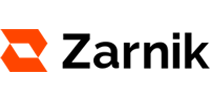
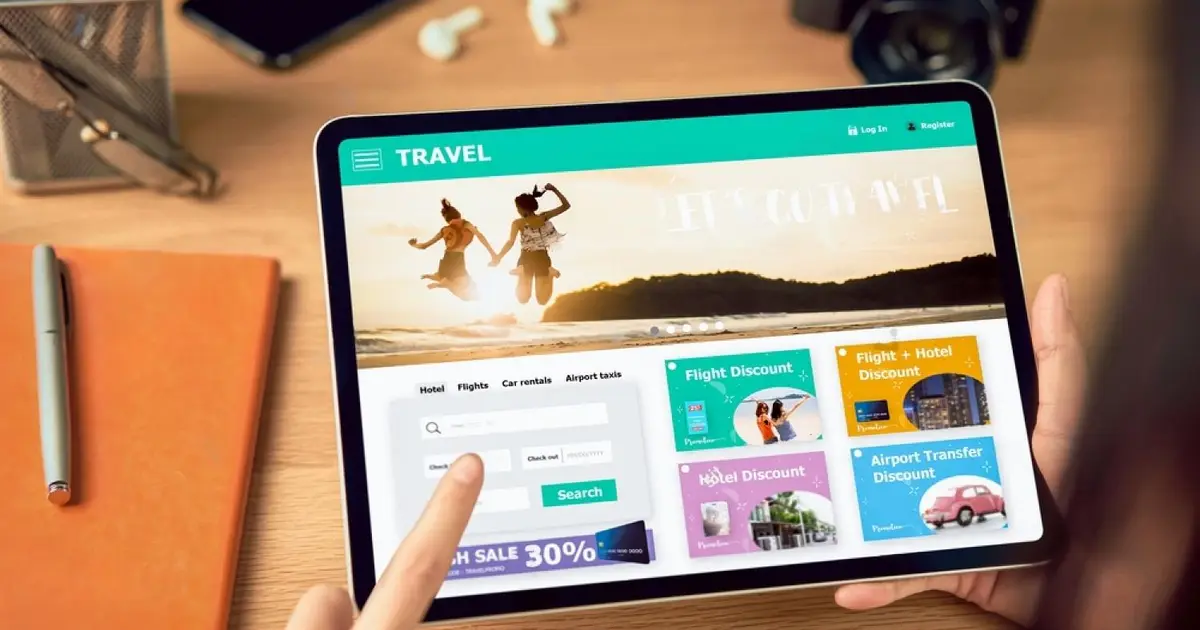

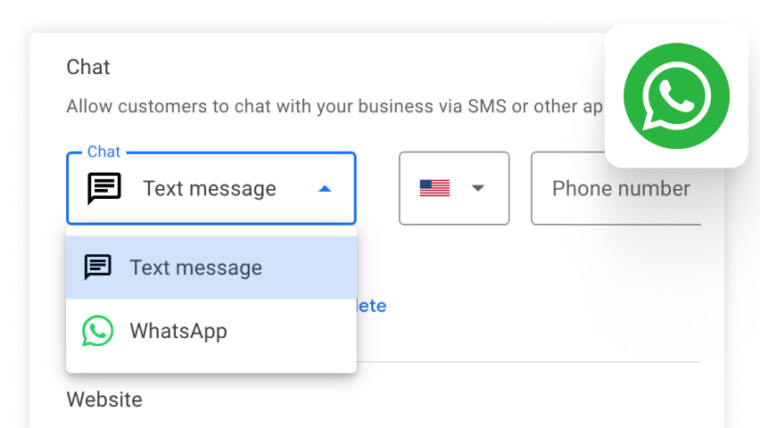

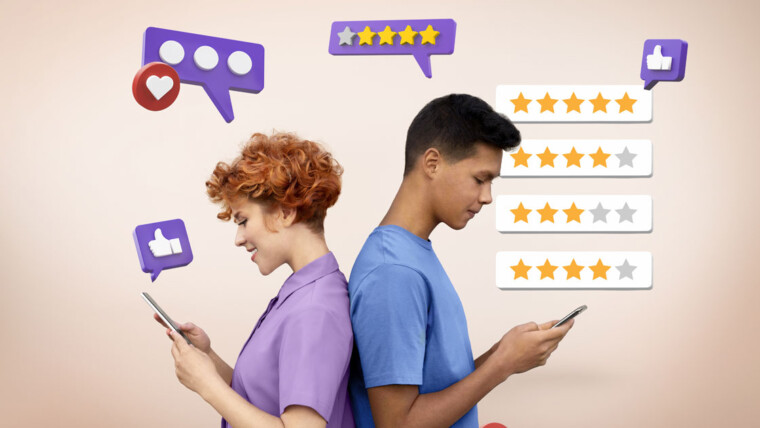
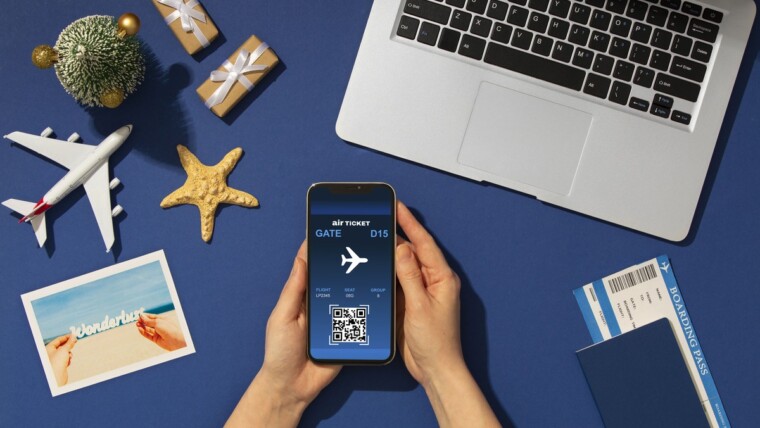
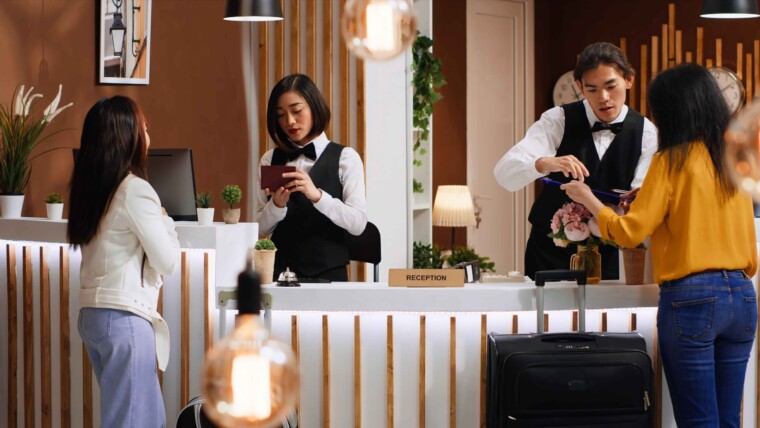
Essential Diversey Chemicals: A Guide for R1 to R9 TASKI Series
How to Respond to Guest Reviews with 10 Samples
Top OTAs in India: Complete 2024 Guide for Hoteliers
Different Types of Paper Napkins for Restaurants
Guest Reviews: The Hidden Force Behind Bookings